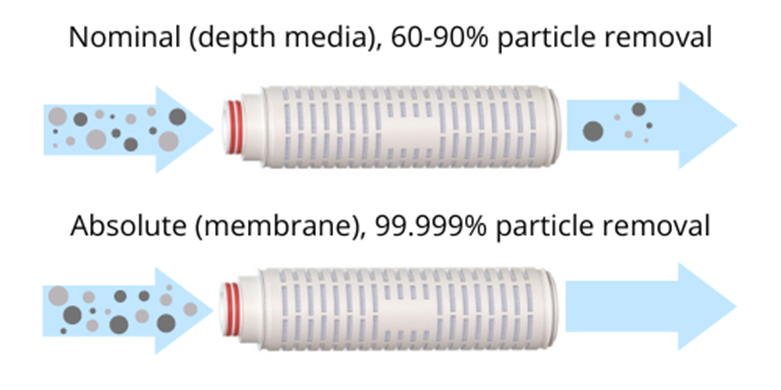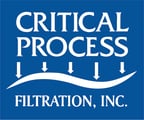When these situations arise, we recommend that focusing on achieving the targeted performance of a filter over the rating will yield the best results.
While filter ratings are an important indication of how well the filter will remove particles of varying sizes from a fluid or gas, it is important to note that nominally rated filters from different manufacturers can have the same rating, but yield different results. The opposite is also true – nominally rated filters from different suppliers can have different ratings, yet yield the same result. Naturally, this can create confusion and impact your filter buying decisions.
With that in mind, let’s start with differentiating between the two types of ratings that indicate pore size and efficiency in removing particulates -- Nominal and Absolute ratings.
 Nominal pore size ratings refer to the size of the particles (in microns) that are prevented from passing through the filter and the minimum percentage of how many particulates are blocked, which is typically 60-90%. Since the size, shape, and concentration of particles can vary, manufacturers are approximating the pore size or some performance characteristics such as retention, beta rating, flow rate, or average pore size to assign a rating. Without a standard among providers, it's important to test and understand the performance your application will achieve with a particular brand of product.
Nominal pore size ratings refer to the size of the particles (in microns) that are prevented from passing through the filter and the minimum percentage of how many particulates are blocked, which is typically 60-90%. Since the size, shape, and concentration of particles can vary, manufacturers are approximating the pore size or some performance characteristics such as retention, beta rating, flow rate, or average pore size to assign a rating. Without a standard among providers, it's important to test and understand the performance your application will achieve with a particular brand of product.
Absolute pore size ratings refer to the size of contaminants a filter can block at almost full efficiency (99%). These ratings are assigned to membrane filters that are typically used for sterilization applications. For example, 0.1, 0.2, and 0.4 absolute-rated filters are designed for the complete retention of bacteria (A. laidlawii, B. diminuta, S. marcescens respectively). Substituting an absolute filter from one manufacturer to another is likely to yield acceptable performance, in that the relevant bacteria will be removed from the filter stream. However, the same cannot be said for nominal filters.
At Critical Process Filtration, we see nominal ratings of other manufacturers fall all over the map. In one particular case, a company was using a 0.2 µm nominally rated polypropylene depth filter for water filtration. For many, a 0.2 µm rating carries a higher meaning. While this may be the case for absolute filters (bacterial retention) it is not the case for nominally rated filters. When we tested the customer’s 0.2 µm water filter, it had the same retention, flow rate, and other filtration characteristics as our 1.0 µm polypropylene depth filter.
By looking at the results and specifying the filter’s performance, the customer now had the opportunity to benefit from our 1.0 µm polypropylene depth filter which offered superior performance at a reduced cost.
When writing filter specifications, it is critical to define the purpose and required performance characteristics of the filter. This is important even for a nominally rated filter, as performance can differ from vendor to vendor. And as always, testing before implementing leads you to a best-fit solution.
While you concentrate on reaching your operational goals every day, we focus on testing, analyzing, and providing the types of filtration solutions that make our customers successful. Our technical team is here to answer questions and help you solve your filtration challenges. Contact us today!
